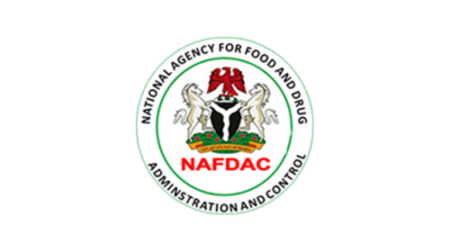The Evolving Landscape of Work: Embracing the Gig Economy
The traditional notion of a 9-to-5 job is rapidly fading, giving way to a dynamic gig economy where freelancing and side hustles are becoming increasingly prevalent. Driven by technological advancements, accessible online platforms, and a desire for greater flexibility, individuals are embracing the opportunity to monetize their skills and passions outside the confines of traditional employment. This shift presents a compelling alternative for those seeking financial independence, creative control, and a better work-life balance. However, navigating the gig economy requires a keen understanding of its unique financial implications and proactive strategies to mitigate potential challenges.
Navigating the Financial Realities of Freelancing and Side Hustles
One of the most significant distinctions between traditional employment and the gig economy is the volatility of income. Unlike salaried employees with predictable paychecks, freelancers and side hustlers often experience fluctuating earnings, making budgeting and financial planning more complex. This unpredictable income flow necessitates building a robust emergency fund, typically covering three to six months of living expenses, to act as a buffer during lean periods. Meticulous tracking of income and expenses is also crucial, enabling freelancers to identify spending patterns and avoid overspending during high-earning months. Diversifying income streams by securing multiple clients or exploring various hustles minimizes the impact of losing a single source of income, while adopting a "pay yourself first" mentality ensures consistent savings or investments contribute to long-term financial security.
Tax Obligations and the Absence of Employer Benefits
Unlike traditional employees who have taxes automatically deducted, freelancers and side hustlers bear the responsibility of managing their taxes independently. This includes paying self-employment taxes, which cover social security and Medicare contributions, and making estimated quarterly tax payments. Failing to comply with these obligations can lead to penalties and further financial strain. To effectively manage taxes, freelancers should allocate a percentage of each payment received specifically for taxes, maintain detailed records of deductible business expenses, and consider investing in accounting software to simplify tax preparation. Seeking professional advice from a tax consultant can also provide valuable insights into potential deductions and ensure compliance.
Another significant difference between traditional employment and freelancing is the absence of employer-provided benefits such as health insurance, retirement plans, and paid time off. Freelancers must shoulder these costs themselves, which can be substantial. Securing health insurance through marketplace plans or professional associations is often more expensive and less comprehensive than employer-sponsored plans. Similarly, retirement planning requires proactive effort, with options like SEP IRAs and solo 401(k)s offering tax-advantaged ways to save for the future. The lack of paid leave also necessitates financial planning to cover periods of illness or vacation. Understanding and accounting for these expenses is crucial for maintaining financial stability.
Hidden Costs and the Emotional Toll of Freelancing
Beyond the direct costs of healthcare and retirement, freelancers also face various overhead expenses often overlooked. These include essential tools and equipment, software subscriptions, internet access, marketing costs, and potentially co-working space fees or home office expenses. Furthermore, continuous professional development through courses and certifications is essential for staying competitive in the gig economy. Accurately budgeting for these expenses is paramount to maintaining professionalism and delivering high-quality work without overspending.
The financial uncertainties inherent in freelancing can also take a toll on mental well-being. The constant pressure to secure clients, meet deadlines, and manage fluctuating income can lead to stress, anxiety, and even burnout. Side hustlers balancing a full-time job may experience exhaustion and reduced productivity, affecting both their primary employment and their side venture. Setting realistic goals, defining clear income targets and work schedules, and joining supportive communities can help mitigate these pressures. Prioritizing self-care through relaxation, exercise, and hobbies is equally important for maintaining mental and physical health.
Unlocking the Potential for Financial Growth and Independence
Despite the challenges, freelancing and side hustling offer immense potential for financial growth and independence. Unlike salaried positions with capped earnings, freelancers have the opportunity to scale their income by securing high-paying clients, increasing productivity, or developing specialized expertise in niche areas. Online platforms provide access to a global client base, further expanding earning potential. Many freelancers successfully transition into entrepreneurship, creating multiple revenue streams and building long-term wealth.
Balancing the Risks and Rewards of Self-Employment
Successfully navigating the gig economy requires carefully balancing the risks and rewards of self-employment. Proactive financial planning, continuous skill development, and leveraging tools like accounting software are essential for mitigating challenges and maximizing opportunities. While income volatility, tax obligations, and the lack of benefits present hurdles, they are not insurmountable. With careful planning, strategic decision-making, and adaptability, individuals can thrive in the gig economy, achieving financial independence and shaping their career paths on their own terms.
The Future of Work: Embracing Flexibility and Independence
The rise of freelancing and side hustles signifies a fundamental shift in how we perceive work. The gig economy offers the potential for greater flexibility, creative fulfillment, and financial control, empowering individuals to define their own professional journeys. By understanding the realities of this evolving landscape and approaching it with a proactive and informed mindset, individuals can unlock the immense opportunities that the gig economy presents, achieving both financial stability and professional satisfaction.














